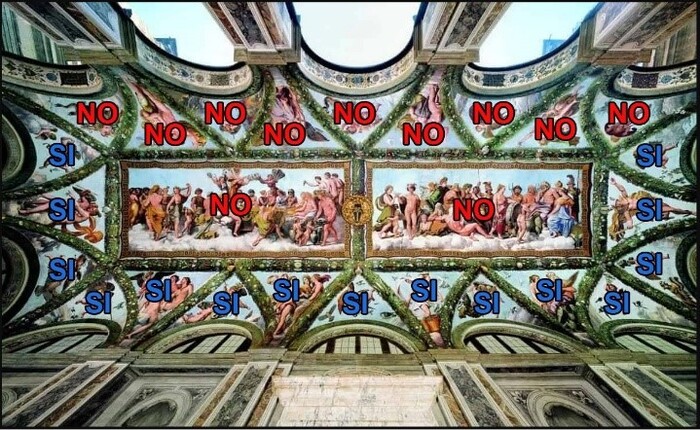New scientific research on the frescoes at Rome's Villa Farnesina has revealed the presence of 'Egyptian blue' , the oldest synthetic pigment in history, in the Loggia of Cupid and Psyche, frescoed in 1518 by Raphael and his workshop assistants.
The discovery was made thanks to the Villa Farnesina Lincei Centre of Cultural Heritage Research (CERIF), headed by Lincei Academy member Professor Antonio Sgamellotti.In 2020 Sgamellotti had detected Egyptian blue in another Raphael fresco, the Triumph of Galatea, which was done at the same palace just a few years previously.
The two works are the first cases known to have featured Egyptian blue in the Renaissance.The hue, produced over 3,000 years ago by the Egyptians and used throughout the Mediterranean, had fallen into disuse after the fall of the Roman Empire."This discovery highlights new affinity between the Triumph of Galatea and the Loggia of Cupid and Psyche, opening interesting scenarios for research," said Sgamellotti."It will make it possible to better reconstruct the techniques used by Raphael, as well as the conservation history of the Loggia itself".
The new research at Villa Farnesina was conducted in collaboration with Cnr-Iret and Adamantio, a University of Turin spin-off headed by Marco Nicola, who has developed a new diagnostic instrument for cultural heritage."It is a viewer capable of identifying and locating Egyptian blue in real time thanks to the luminescence induced by visible light", explained Sgamellotti."As practical to use as binoculars, it does not require the set-up of scaffolding or photographic sets and it allows you to screen large surfaces at distances that are not easily accessible, like the vault of the Loggia of Cupid and Psyche, which is eight meters high".
Leggi l'articolo completo su ANSA.it
